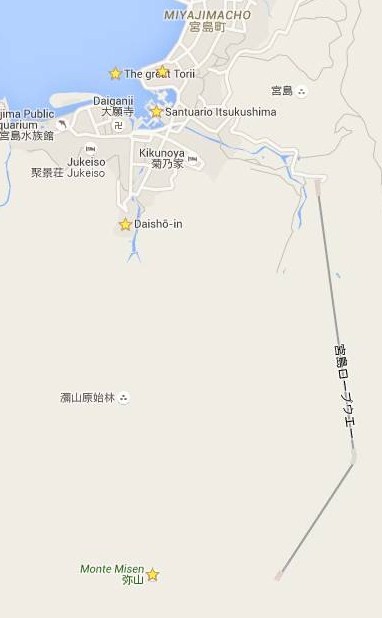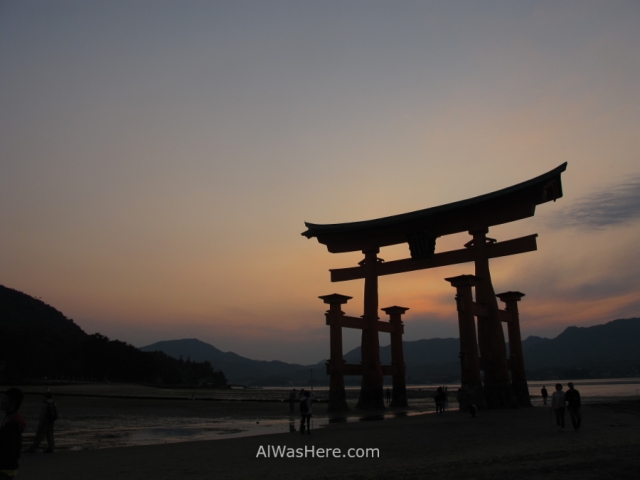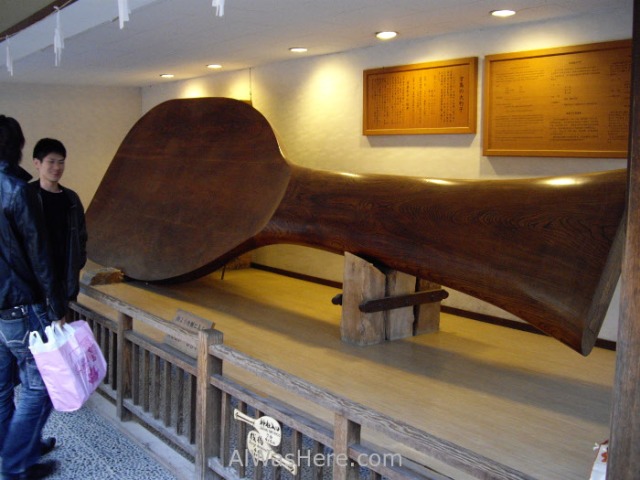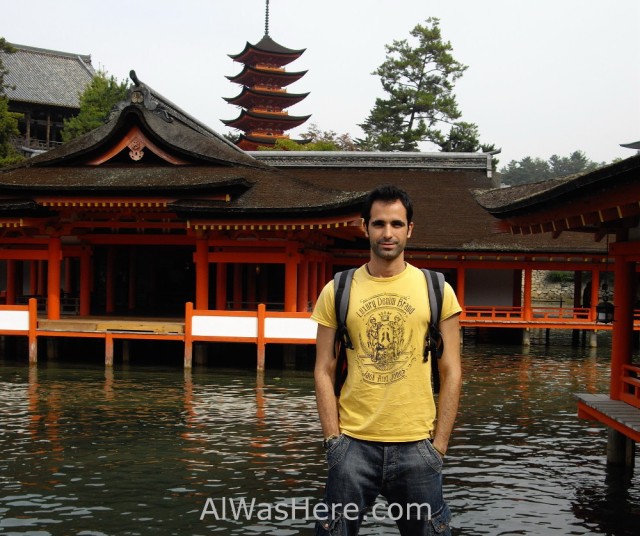Updated February 25, 2019
- I was here twice, one day in November 2008 and one day in April 2013, but I’ve never stayed on the island, because it is very expensive.
- Number of days recommended: 1.
- My score: 5/5. I would repeat a hundred times a hundred days in a row.
Absolutely in love with Miyajima, in my opinion one of the most beautiful places in Japan and one of the most charming islands I have ever visited.
ESSENTIAL INFORMATION

HOW TO GET THERE
Most people visit Miyajima as day trip from Hiroshima:
- You can use the Japan Rail Pass; Miyajimaguchi station is very close to the ferry terminal, where you can also use the JRP. The train takes 25 minutes.
- For those who do not have it, it is cheaper (and slower) go on the tram number 2 (¥ 270) from Hiroshima and the ferry costs ¥ 180 each way. It goes to the north of Miyajimacho, a 10 minute walk to the attractions.
- There are also direct boats from Hiroshima Peace Park: one or two each hour, 2000 ¥ one way / 3600 ¥ round trip; it takes 45 minutes.
GETTING AROUND
Definitely walking. There is a cable car up to the top of Mount Misen.
WHERE TO STAY
Overnight on the island is a privilege that can be costly. The town has only 2,000 inhabitants; housing is scarce and therefore, although references are excellent, prices start above 200 € for a double room, except for occasional discounts. There is a campsite 10 minutes by bus east from the ferry terminal but, unless the travelers bring their own tent, is also very expensive.
WHERE TO EAT
Eating is not very expensive. Any of the restaurants in Miyajima offers Japanese food slightly pricier than usual. Oysters are spectacular, better cooked than any place I’ve tried them.
ITINERARY

Having been regarded as a sacred island hundreds of years ago, most of the island is not open to the public. If a visitor drives the roads to the east and west, in a few kilometers you will find no-trespassing fences. The area of interest is completely visitable.
Leaving the ferry terminal to the right, the first thing the traveler will probably see are some deers. Here and in Nara they are sacred, and therefore free to roam. They larger ones have their horns cut so they can not hurt people, but the real danger is that they ask insistently for food and can become a nuisance; anything you have in your hands can be eaten (I’ve seen them eat a map) and even your clothes.

Next, although it can be seen from the ferry, is the FLOATING TORII (check the specific post). According to official statistics, one of the three most photographed places in Japan. I do not know how they count how many photos people take, but I’m sure they are many. You can’t help taking almost the same picture over and over again. The situation of the Torii produces a spectacular composition. At low tide you can reach the base. Great pictures can be taken if you wait until late afternoon. It is expected to begin to be restored in June 2019, and will be covered by scaffolding; the works are expected to last one year.

In the village you’ll find is the world’s largest rice spatula.

And also Itsukushima Shrine (Itsukushima is the real name of the island), well known because it sits on poles in the sand. A visit at high tide is worthy. Open from 6:30 to 17:00-18:00 depending on the season, admission ¥ 300.

There are many more lesser known but equally beautiful temples. Two are at the top of the picture above, left the Senjokaku, famous for its large open main room and top-centre the Gojuto, a 5-story pagoda.
Following the suggested route, it continues south towards the DAISHO-IN (check the specific post). Open from 8 am to 5 pm, free admission. To get there, the road is steep and there are flights of stairs. This temple is big and beautiful, there are multiple rooms and is well cared, but what is most striking are the hundreds of small statues.

The route continues on foot along the path leading to the SUMMIT OF MOUNT MISEN (check the specific post). It is very steep, almost all the path are flights of stairs, so not all visitors can make it. This is one of the three paths leading to the top; in my two visits I have walked two of them, and I consider the Daisho-in path is the nicest. I remembered that it took me approximately 40 minutes to climb, but my friend Manolo was there and says no way, he says it takes 80 or 90 minutes.
Despite the usual haze, the views from the top of Mount Misen are awesome.

Those who prefer to go up comfortably must go back to the village and turn right following the signals for 10 minutes to the cable car. Open from 9 am to 5 pm, ¥ 1000 one way, round trip ¥ 1800. From the upper station still you need to go up several minutes to get to the top.

Pingback: MARAVILLOSA MIYAJIMA – Al Was Here
Pingback: DAISHO-IN TEMPLE – Al Was Here
Pingback: JAPAN RAIL PASS – Al Was Here
Pingback: Japan – Al Was Here
Pingback: HIROSHIMA PREFECTURE – Al Was Here
Pingback: MOUNT MISEN – Al Was Here
Pingback: THE FLOATING TORII – Al Was Here
Pingback: MIYAJIMA FLOATING TORII – Al Was Here
Pingback: HIROSHIMA: WHEN TO GO, TRANSPORT, WHERE TO SLEEP AND EAT AND DANGERS – Al Was Here
Pingback: BEST THINGS TO DO IN HIROSHIMA: PEACE MEMORIAL MUSEUM, PEACE MEMORIAL PARK AND CASTLE – Al Was Here
Pingback: HIROSHIMA (広島) – Al Was Here